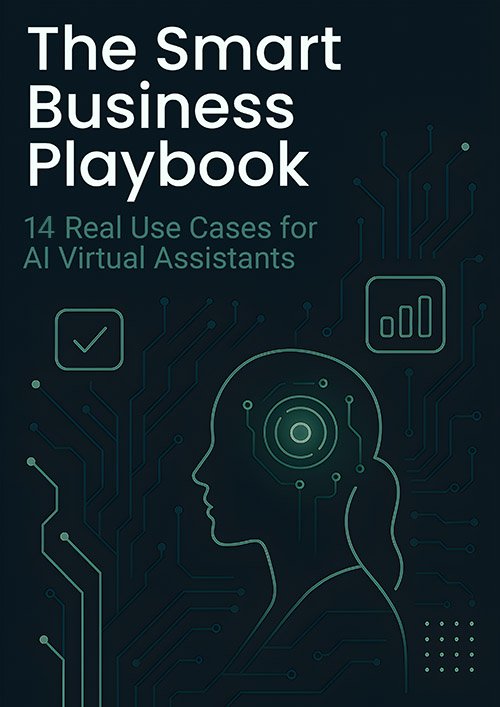To guarantee a thorough pre-employment documentation process, start by gathering extensive candidate information, including work history and references. Verify identities using Social Security Numbers, conduct criminal and driving record checks, and confirm educational and employment details. Reference checks can offer insights into candidates' work ethics. Maintaining extensive documentation is critical for compliance and data protection. Through this structured approach, you'll mitigate risks and make informed hiring choices. Dive deeper for an in-depth understanding.
Key Takeaways
- Collect candidate information through comprehensive application forms including work history, education, and criminal history disclosures.
- Verify candidate identity using Social Security Number checks with written consent for compliance.
- Conduct criminal, driving, and employment history checks with candidate consent to ensure accuracy and compliance.
- Perform reference checks by contacting previous employers to gain insights into candidate work ethic and reliability.
- Maintain thorough documentation of the hiring process, including consent forms and background checks, to ensure legal compliance and transparency.
Gathering Candidate Information

When gathering candidate information, start by ensuring you have an extensive application form that captures all necessary personal details, work history, and education. This helps assess the candidate's educational qualifications and professional background effectively.
Include a section for disclosing criminal history, as it's vital for conducting thorough background checks. Verifying identity is essential to confirm candidate eligibility and prevent fraud.
Gathering references from previous employers or colleagues can provide insights into the candidate's work ethic and reliability. Utilize applicant tracking systems to streamline the process, ensuring efficiency while managing candidate data.
Having a robust system in place helps you make informed hiring decisions and keeps the recruitment process organized, ultimately supporting your organization's growth and success.
Verifying Social Security Numbers
How essential is it to verify Social Security Numbers (SSNs) in the hiring process? It's critical.
Verifying social security numbers guarantees the accuracy of a candidate's identity, playing an important role in employment checks and background screening. The Social Security Administration (SSA) provides a free online service, the Social Security Number Verification Service (SSNVS), to confirm SSN validity.
With about 1 in 10 people having errors in their SSN records, SSN verification helps avoid potential hiring issues and legal liabilities.
Before conducting SSN verification, obtain written consent from candidates to comply with privacy laws. Failure to verify can lead to legal penalties if a candidate uses false identity or work authorization.
Make SSN verification a key step in your hiring process.
Conducting Criminal Record Checks

When conducting criminal record checks, you'll need to choose the appropriate level—basic, standard, or enhanced—based on the job's responsibilities and risk factors.
This process guarantees you assess a candidate's history accurately while maintaining compliance with privacy laws like the Fair Credit Reporting Act.
Remember to obtain written consent from candidates and consider the "seven-year rule" to avoid discrimination with outdated records.
Levels of DBS Checks
Understanding the levels of DBS checks is essential for employers seeking to conduct thorough criminal record checks in the UK.
There are three levels of DBS checks: Basic, Standard, and Enhanced. A Basic DBS check reveals only unspent convictions, making it suitable for roles not requiring extensive scrutiny.
Standard DBS checks offer details on both spent and unspent convictions, cautions, reprimands, and warnings, typically necessary for positions involving vulnerable groups.
Enhanced DBS checks provide all the information in a Standard check, along with potential local police information, offering the most complete criminal history insights for sensitive roles.
Employers must guarantee the appropriate level of DBS check to comply with safeguarding regulations, maintaining compliance with legal obligations.
Assessing Candidate History
While evaluating a candidate's history is essential for any thorough hiring process, conducting criminal record checks is a key component in ensuring workplace safety and minimizing risks. Pre-employment screening involves examining candidate history through background checks to uncover any criminal records. By adhering to the Fair Credit Reporting Act, you're required to obtain consent and inform candidates if decisions are impacted by their criminal history. Ban-the-box laws delay inquiries about a candidate's criminal past until after a job offer. With about 30% of candidates having a criminal record, thorough screening processes are important for informed hiring decisions. Here's a quick comparison of criminal record check types:
| Check Type | Detail Level | Regulations |
|---|---|---|
| Standard | Basic offenses | FCRA |
| Enhanced | Serious convictions | Ban-the-box laws |
| International | Global checks | Country-specific |
| Federal | Federal crimes | Federal laws |
| State | State-specific | State laws |
Performing Driving Record Checks
Before hiring a candidate for a role that involves driving, conducting a thorough driving record check is essential. These checks assess a candidate's motor vehicle history, revealing important information such as license status, violations, and any DUI or reckless driving offenses.
In industries like transportation and logistics, a clean driving record might be a legal requirement for employment. Ensuring compliance with state laws regarding these checks is imperative, as regulations vary across jurisdictions.
Thorough driving record checks help reduce liability risks and enhance workplace safety by ensuring employees who drive for work are responsible and trustworthy. By examining these records, you can identify candidates who meet the necessary standards, safeguarding your organization and promoting a safe working environment.
Confirming Educational History

When confirming a candidate's educational history, you'll need to verify the authenticity of their degree by contacting the educational institutions directly.
Cross-check the provided attendance dates and degree titles with official records to guarantee accuracy.
This process not only confirms qualifications but also protects your organization from potential misrepresentation risks.
Verifying Degree Authenticity
Ensuring the authenticity of a candidate's degree is a vital step in the hiring process, given that approximately 30% of resumes contain false educational claims.
Verifying degree authenticity through educational verification involves confirming the degree conferred and attendance dates.
To streamline this process and protect candidate rights, consider:
- Utilizing third-party verification services: These services enhance accuracy and efficiency, often having established relationships with institutions.
- Ensuring compliance with FCRA: It's essential to adhere to legal standards, protecting candidate rights and avoiding legal repercussions.
- Reviewing the candidate's resume: Pay attention to any discrepancies in the educational section.
Contacting Educational Institutions
Verifying the authenticity of a candidate's degree often involves directly contacting the educational institutions they attended. To guarantee the accuracy of a candidate's claimed degrees, initiate educational verification by confirming attendance dates, degrees conferred, and any honors.
This thorough review provides a detailed view of the candidate's academic background, a critical step in the hiring process. Given that 78% of applicants misrepresent their qualifications, it's vital to verify these claims.
Institutions typically require a signed release from candidates, guaranteeing compliance with privacy laws. For efficiency and legal adherence, consider using third-party verification services.
These services streamline the process, securing accurate information while minimizing errors. Their compliance with privacy standards guarantees the candidate's rights are respected throughout verification.
Cross-Checking Dates and Titles
In today's competitive job market, you must diligently cross-check a candidate's educational history to maintain the integrity of your hiring process. Verifying the accuracy of claimed degrees, diplomas, and certifications against official records is essential.
Confirm attendance dates to guarantee the timeline aligns, as discrepancies might suggest misrepresentation.
- Conduct educational verification to validate graduation status and assess the institution's credibility, impacting the candidate's qualifications.
- Utilize third-party services for educational verification to expedite the process, given their established relationships and access to verification databases.
- Be aware that approximately 78% of candidates misrepresent their educational qualifications, increasing the risk of hiring errors.
Verifying Employment History
While evaluating potential hires, confirming employment history provides critical insights into a candidate's past job titles, employment dates, and reasons for leaving.
Verifying employment history is essential for guaranteeing accuracy in candidates' job history. Employment verification checks help hiring managers identify discrepancies, as 78% of applicants misrepresent themselves on resumes.
About 85% of employers conduct these checks to avoid misrepresentation and improve the quality of hires, as bad hires can negatively impact team dynamics and productivity.
Before conducting employment verification, always obtain candidates' consent to comply with the Fair Credit Reporting Act (FCRA). This step not only protects you legally but also guarantees a transparent hiring process.
Conducting Reference Checks

When conducting reference checks, you gain essential insights into a candidate's work ethic and interpersonal skills by reaching out to their previous supervisors or colleagues. This process often reveals valuable information influencing your hiring decisions.
To guarantee compliance with privacy regulations, always obtain candidate consent before contacting references.
- Ask open-ended questions to gather detailed insights into the candidate's performance and suitability.
- Be vigilant for discrepancies between the candidate's claims and what references report.
- Focus on understanding the candidate's work ethic and behavior in a professional setting.
Approximately 40% of organizations discover inconsistencies during this process, underscoring the significance of thorough checks.
Ensuring Comprehensive Documentation
After conducting thorough reference checks, focus on guaranteeing extensive documentation to support your hiring decisions. A detailed pre-employment screening process involves meticulous record keeping of background checks, employment history, and consent forms. Maintaining this documentation not only aids in legal compliance but also guarantees transparency with candidates. Documenting the rationale behind hiring decisions, such as insights from interviews, helps protect against discrimination claims.
| Key Aspect | Importance |
|---|---|
| Background Checks | Legal compliance and risk mitigation |
| Employment History | Verifies accuracy and authenticity |
| Consent Forms | Guarantees transparency and candidate agreement |
| Data Protection Regulations | Safeguards sensitive information access |
Criminal background checks and data protection regulations demand secure storage, allowing only authorized personnel access. This structured approach assures that your hiring process is both thorough and legally compliant.
Frequently Asked Questions
What Are the Steps in the Pre-Employment Process?
Think of it as a hero's journey. You'll navigate pre-employment requirements, undergo candidate evaluation, complete background checks, and pass skill assessments. After employment verification and reference checks, expect a job offer, followed by onboarding, ensuring legal compliance and candidate communication.
What Is Pre-Employment Documentation?
Pre-employment documentation guarantees candidate documentation importance by verifying employment eligibility, conducting background check processes, and checking resume accuracy. You'll manage reference check protocols, comply with regulations, address data privacy concerns, and meet onboarding documentation needs effectively.
What Are the Three Pre-Employment Forms?
Picture the pre-employment process as a complex puzzle. You'll need tax forms for financial clarity, job applications for employment history and references, and I-9s for eligibility verification. Guarantee accuracy to prevent future headaches or compliance issues.
How Do I Fill Out a Pre-Employment Questionnaire?
To fill out a pre-employment questionnaire effectively, focus on accuracy. Avoid common mistakes by ensuring your personal information, job history, and references section are correct. Highlight skills assessment, meet employer expectations, and understand legal implications for document accuracy.
Conclusion
In steering through the maze of pre-employment documentation, you're the skilled conductor orchestrating a symphony of details. Each step, from verifying social security numbers to confirming employment history, is a note in the composition of a robust hiring process. Like an artist perfecting their masterpiece, ensuring thorough documentation transforms chaos into clarity. Your meticulous attention to detail not only safeguards your organization but also paves the way for new talent to flourish. Embrace the process; your diligence defines success.


